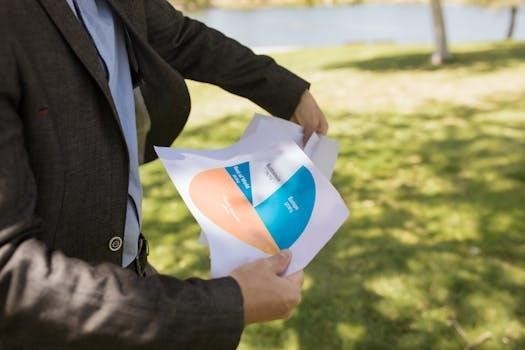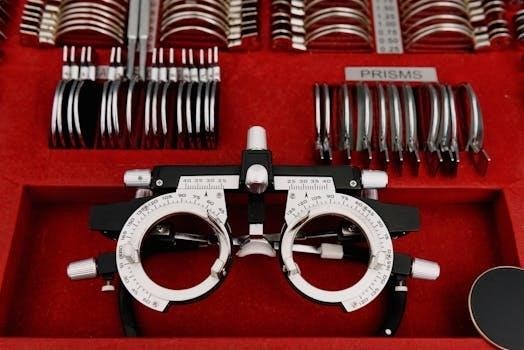
What is a Visual Analysis Essay?
A visual analysis essay is a form of academic writing where you dissect and interpret visual content. This includes items like paintings‚ photos‚ or any visual artifact. It requires scrutinizing elements to understand their significance.
Definition and Purpose
A visual analysis essay is a type of academic writing that involves a detailed examination and interpretation of visual elements within a piece of art‚ architecture‚ or any visual medium. Its main purpose is to go beyond surface-level observations‚ exploring the deeper meanings and messages conveyed through these elements. The essay aims to understand how the visual components contribute to the overall impact of the work and the message it communicates to the viewer. It requires in-depth research and critical thinking skills to effectively analyze and articulate these observations.

Key Components of a Visual Analysis Essay
Key components include a strong introduction‚ detailed body paragraphs‚ and a concise conclusion. These parts guide the reader through a structured analysis of the visual piece.
The introduction of a visual analysis essay is crucial for setting the stage. It should clearly state that the essay is a visual analysis. Provide necessary background information about the artwork or visual piece being analyzed. The introduction must engage the reader and offer a brief overview of the subject matter. It should also include a thesis statement that presents the main argument or interpretation of the visual. The introduction lays the groundwork for a detailed exploration of the chosen piece. This opening paragraph should be captivating and informative.
Body Paragraphs
The body paragraphs of a visual analysis essay delve into the specifics of the visual piece. Each paragraph should focus on a particular element or aspect‚ such as composition‚ color‚ or symbolism. Provide detailed descriptions and interpretations‚ supporting claims with evidence from the visual itself. Analyze how these elements contribute to the overall message or meaning. The body paragraphs should be logically organized and build upon each other‚ creating a coherent and insightful analysis. Use clear topic sentences to guide the reader through each point‚ ensuring a well-structured discussion.
The conclusion of a visual analysis essay should summarize the main points of your analysis and restate your thesis. It’s crucial to avoid introducing new information here. Instead‚ reflect on the overall impact of the visual piece and its intended message. Consider the broader context or implications of your analysis‚ and leave the reader with a final thought or insight. A strong conclusion reinforces your argument and demonstrates a comprehensive understanding of the visual text. It should tie together the various elements you’ve discussed‚ providing a sense of closure to your analysis.

Visual Analysis Essay Structure
A visual analysis essay commonly uses a structure featuring an introduction‚ body paragraphs‚ and a conclusion. These sections ensure a systematic exploration of the visual piece.
Five-Paragraph Essay Format
The five-paragraph essay format is a common structure for visual analysis. It begins with an introductory paragraph that presents the subject and thesis. The essay then develops through three body paragraphs‚ each exploring a different aspect of the visual work. Finally‚ it concludes with a summary paragraph restating the thesis and main points. This structure offers a clear and organized approach‚ helping the writer systematically analyze the visual piece and present their interpretations in a logical manner. This format provides a foundational framework for many students when beginning their visual analysis.
The three-section structure‚ consisting of introduction‚ body‚ and conclusion‚ is a fundamental approach to structuring a visual analysis essay. The introduction presents the visual work and includes a thesis statement. The body paragraphs then provide detailed analysis‚ examining specific elements and their significance. Finally‚ the conclusion summarizes the main points and restates the thesis‚ offering a final interpretation of the visual piece. This structure allows for a clear and concise examination of the visual material‚ making it accessible to the reader. This framework is versatile and effective for analyzing various visual forms.
Visual Analysis in Different Fields
Visual analysis is utilized across various fields‚ such as art history and communications. It helps in understanding both artistic and persuasive visual messages. This makes it a versatile tool for interpretation.
Art History
In art history‚ visual analysis is fundamental for understanding artworks. It involves examining formal elements like color‚ composition‚ and texture to interpret a piece’s historical and cultural context. Through detailed observation‚ students can explore how an artwork’s visual characteristics contribute to its meaning and impact. This process of scrutinizing artistic choices allows for a deeper appreciation of the work and its place within art historical narratives. Ultimately‚ it enables a well-supported analysis of the artist’s intention and its effect on viewers across time.
Communications
In communications‚ visual analysis plays a crucial role in understanding how visual messages influence audiences. Analyzing advertisements‚ for instance‚ involves examining elements like typography‚ imagery‚ and layout to uncover persuasive techniques. Students explore how these elements work together to convey specific messages and evoke desired responses. This understanding of visual rhetoric is essential for effective communication strategies. By dissecting visual texts‚ students learn to identify and evaluate the intended and unintended consequences of visual communication within diverse contexts. They also learn to construct compelling and effective visual messages.

Analyzing Visual Elements
Analyzing visual elements involves understanding components like typography and imagery. These elements contribute to the overall message and impact of a visual piece‚ aiding in comprehension.
Typography
Typography‚ a crucial aspect of visual analysis‚ encompasses the selection and arrangement of fonts within a visual text. It significantly influences how viewers perceive and interpret the message. Different fonts evoke varying emotions and associations. For example‚ serif fonts often convey tradition and formality‚ while sans-serif fonts suggest modernity. The size‚ weight‚ and spacing of letters also contribute to the overall visual hierarchy and readability. Analyzing typography involves assessing how these elements enhance or detract from the visual’s intended purpose‚ impacting the overall effectiveness of the communication and the viewer’s experience.
Imagery
Imagery‚ a core component of visual analysis‚ refers to the use of pictures‚ symbols‚ and visual representations within a text. Analyzing imagery involves examining the subject matter‚ composition‚ and overall aesthetic of the visual elements. Consider the use of color‚ light‚ and shadow‚ as these elements contribute to the mood and tone of the visual. The placement and arrangement of objects and figures also influence the viewer’s perception and interpretation. Furthermore‚ consider how the imagery relates to the overall message and whether it effectively communicates the intended meaning to the audience within the given context.

Writing About Advertisements
Analyzing advertisements involves understanding how visual components persuade an audience. These elements‚ such as imagery and typography‚ work together to convey a specific message and influence consumer behavior.
Persuasive Techniques
When examining advertisements‚ it’s crucial to identify the persuasive techniques employed. These often include appeals to emotion‚ logic‚ or authority‚ aiming to convince the viewer. Visuals play a vital role‚ using color‚ composition‚ and imagery to evoke specific feelings or associations. Typography‚ too‚ can contribute‚ with different fonts and styles suggesting different tones. Furthermore‚ understanding the target audience is key‚ as the advertisement’s message and style will be tailored to resonate with their values and desires. Analyzing how these elements work together reveals the advertisement’s intended effect.


